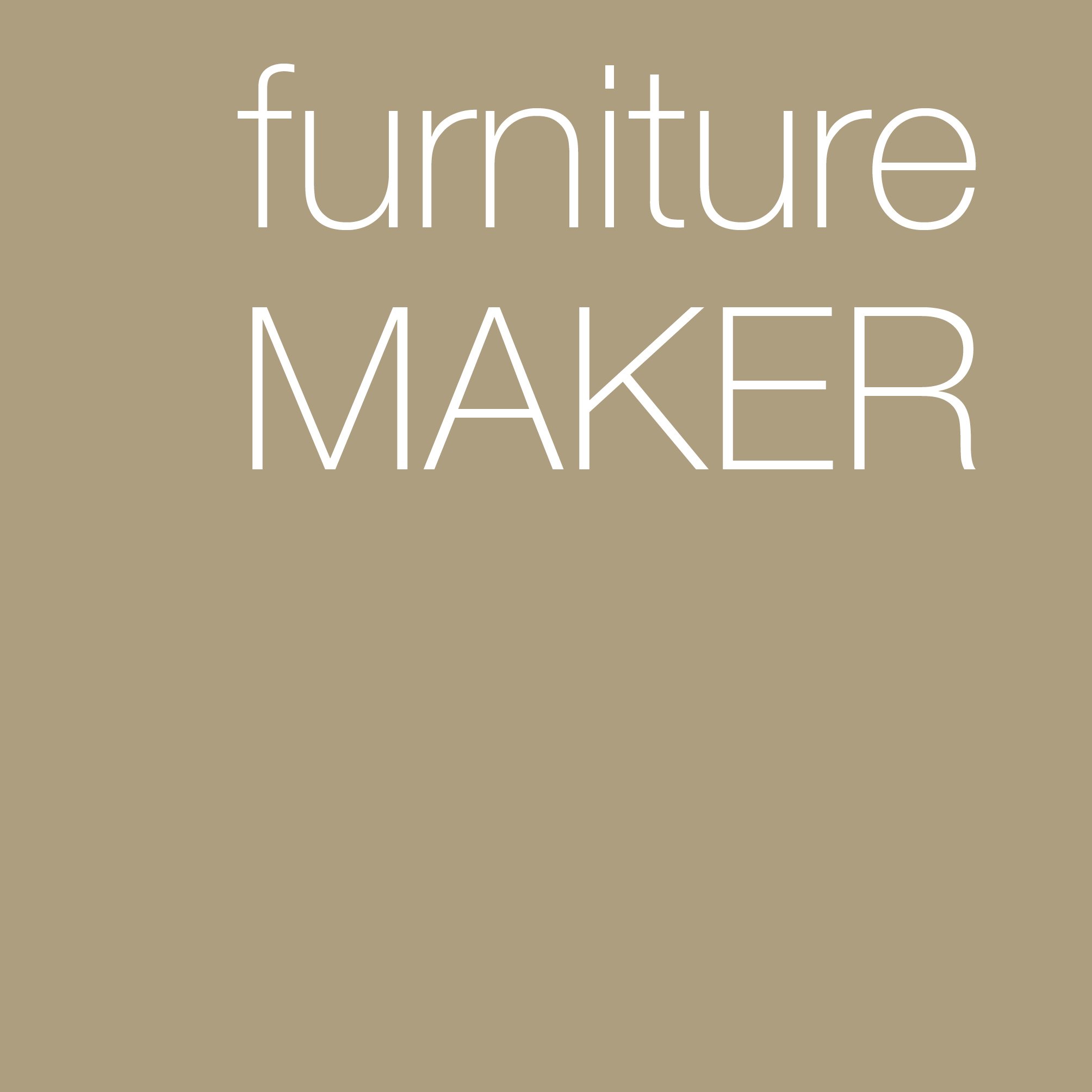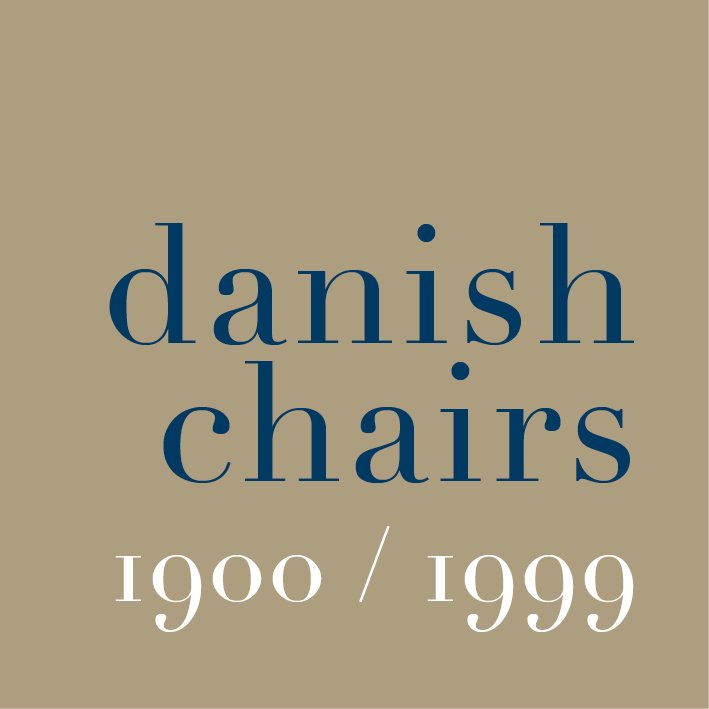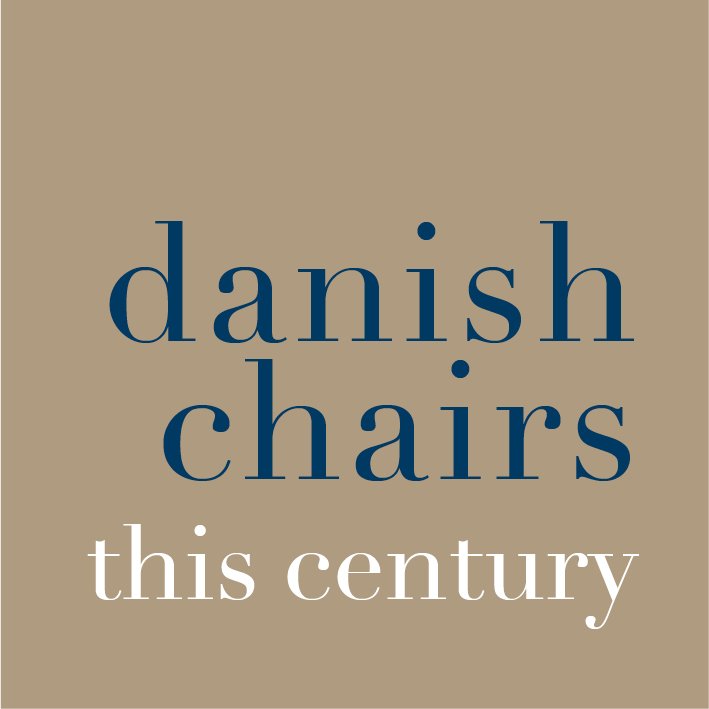why does Denmark produce so many 'good' chairs?
/the display of chairs at Designmuseum Danmark
We are distinguished from other animals because not only do we live in family groups but, generally, we cultivate rather than simply gather food and herd animals rather than just track and hunt meat - so we tend to settle in one place - and tend to sleep under cover, rather than out in the open or up in a tree, so build ourselves permanent homes. We have complex languages for communication so we need to be with people and concentrating on what they are saying; we can cook our food rather than simply eat it raw; tend to eat together rather than on our own; and we walk upright on two legs which means that, after doing all that, we also need to sit down rather a lot.
I was reminded just how important sitting down together can be when looking at the seats shown at Side by Side for the Cabinetmakers' Autumn exhibition at Designmuseum Danmark. These works explored ideas about how we sit together - although specifically for that exhibition how we sit down together outside - hence the full title of the exhibition being Side by Side Outside - and the designers and cabinetmakers explored how the shape and arrangement of seats influences how we react or respond to other people. A work entitled Tingsted by Troels Flensted was particularly interesting because he looked back to ancient seating for inspiration … to low stones set in a circle outside a village as a place for assemblies or meetings. So people don't just sit down but sit down together and for lots of different reasons.
Side by Side Outside - the Cabinetmakers' Autumn Exhibition at Designmuseum Danmark
Tingsted by Troels Flensted was inspired by the stone circles used in the past for village meetings ... here the seats in terrazzo have a slight lip at the back so not strictly a stool. Check when you see someone on a low stool ... there is a tendency to sit too far back with the stool under the legs rather than supporting to spine so one crucial role for a chair is to set the most comfortable posture.
Fette Fingre / Fingers Lovingly Intertwined by Hannes Stephensen and the cabinetmaker Kristian Frandsen ... a variation on what is sometimes called a loving seat or kissing seat but here the chairs can be spun towards or away from the other person to change the dynamics of the conversation ... chairs as an intermediary
Mange Bænke Små / Little Strokes Fell Great Oaks by Sussi Osmark shows how, even in the rain, people sit down and the dynamics of the relationship changes with how you sit.
Arc by Hans Sandgren Jakobsen ... sometimes a chair is not large enough
There can be very few modern homes in Europe that do not have chairs, or at least one chair, as part of the moveable or re-moveable furniture. So chairs are common - in fact just about ubiquitous. But have we reached an interesting point where the way we use chairs and which type of chair we need is changing?
Certainly we are seeing much-discussed changes in family dynamics … more people than ever before live in towns and cities rather than the country; more and more people have less personal space; in western Europe more and more people live alone but even in family groups much less significance is given to eating together at the same time … and if we do sit down to eat with other people then it tends to be in a public rather than in our private space … so in a restaurant or café or canteen … so formal sets of dining chairs are less and less common.
In fact, dining chairs set around a dining table and left like that even when no one is eating was 'normal' for a relatively short period of the history of the home and only at a certain social levels so in middle-class homes through the 19th and 20th centuries. Look at paintings of 18th-century interiors and the common arrangement was to pull chairs back to stand against the wall after the meal and often a table was brought in just for the meal or, if it had leaves or flaps or possibly if it was made in sections, it too would be moved back away from the centre of the room. Even in large prestigious houses from the middle ages onwards and then later in farmhouse kitchens and inns there were more often long benches at long tables rather than chairs.
So how and why and when did having more chairs and more chairs with specific functions become important?
Certainly, through the last century, we can see a tendency to have more chairs and different types of chair in our homes than we do now … so there might be side chairs in the entrance hall - a place to sit and put on or take off shoes or as somewhere to drop a coat or a bag - there might be a desk chair in the study, a dressing-table chair in the bedroom, a set of dining chairs, of course, but also possibly rather different and more basic chairs for eating at a kitchen table, and even another set of similar chairs for sitting out in the garden or on a balcony to eat and a much higher chair at a 'cocktail bar' in the 'lounge' if that was the way you lived.
And outside the home there are still more and very specific types of chairs for lecture theatres, waiting rooms or cafeterias … although it is interesting to see that posh restaurants seem to mirror or better what is found in a private home … and usually there are highly specialised chairs in the barbers and the dentists surgery.
Chairs have to be well made because we don't sit still for long and that puts considerable stress on the components of a chair and on the way the parts are joined together and, generally, we expect chairs to be relatively light … any chair can be strong if it is over engineered in hefty materials … but we want to move chairs around.
More often than not we look for chairs that are both stylish and relatively unusual because people do still use the chairs they buy to express their own view of their own status.
Of course, some homes can have cheap chairs from a flea market or simple chairs, utility chairs, from a department store that are paired with expensive carpets or valuable paintings on the walls but that is pretty rare. Normally expensive and carefully-thought through homes have expensive and carefully chosen chairs.
If anyone visits us at home then about the first thing they are offered - after perhaps somewhere to put their coat and the use of the toilet - is a chair and it is possible that through their entire visit, the only piece of our furniture that they come in direct contact with is one of our chairs. They may only look at and admire, or not, our other pieces of furniture.
Poul Henningsen 1932
Arne Jacobsen 1970
Poul Kjærholm 1953
Johannes Foersom & Peter Hiort-Lorenzen 1996
Nanna Ditzel - Trinidad 1993
Poul Kjærholm 1952
If people who are not Danish are asked to describe a Danish chair they will use words and phrases like well-made, clean lines, natural pale wood ... so these chairs -selected from the chairs shown in Designmuseum Danmark - show that Danish designers have always pushed the boundaries to make us reassess what we assume should be the shape or form of a chair
Many readers, having got this far, will be saying that this is all pretty obvious. But curiously, although we spend so much time sitting down and although most people complain if a chair is uncomfortable, we don't often think about or talk about or mention or consider how many different types of chair construction there are or even about how the design of a chair should reflect what materials are used to make the chair.
If someone talks about their new car then most people listening want to know if it is a sports car or an estate car; a people carrier or an off-road vehicle and possibly much much more detail along with makers name and even colour and often the size of the engine. That information will all be logged away and used to assess (or do I mean judge) your choice. Tell someone you have just bought some new dining chairs and they might ask you where you bought them, or then again might not, but curiously, as soon as they walk into your house, an immediate and rapid assessment can be made, as fast or faster than any social media phone app, that will judge cost, style, possible comfort or not, your taste and what you are trying to say about your view of your own status. And all that from a chair and before they have even sat down on it.
In part the variety of chairs in a design store is, in some ways, simply a practical matter of numbers because in our lives we just get through more chairs. I'm only on my second bed, not counting beds when I was a child, and second ever dining table of my own and I've only had three sofas and the first of those was a soft foam sofa from Habitat that flipped out and was bought after I left university … brilliant for guests but with no frame, just foam - the bed not the guests - and eventually it disintegrated. I have nine chairs in my apartment right now and I can think of at least twelve others that have come and then gone on to other people through my adult life. Gone on to other people … interesting … I've only just realised that none have ended in a skip … not because of a saintly attitude to recycling but because you can usually find a new home for an old chair.
So why are chairs generally more important than we might normally acknowledge and why are chairs so important in Danish design? And no, he adds quickly, it's not because Danes spend more time than other Europeans sitting down.
Again the Side by Side exhibition, or specifically the film that accompanied the exhibition, provided some important clues about Danish chairs. Until around 1900 furniture in the countryside, for homes on farms or in villages in Denmark, were made either by the families themselves or by jobbing carpenters and village joiners. In towns, and particularly in a wealthy city like Copenhagen, similar chairs to the country chairs would be found in the homes of poorer families but furniture for the wealthy and for the larger and larger numbers of affluent professional and middle-class families were made by specialist furniture makers, usually cabinetmakers. Designs were often specific to each individual commission, so not generally produced in large numbers, but craftsmen did use pattern books, so common types emerged, and cabinetmakers could develop specific styles or types that were considered to be their signature pieces. And, of course, in a city like Copenhagen in the 16th, 17th, 18th or 19th century people would have been aware of what was fashionable or not.
In the late 19th century poor working families rented one or two rooms and there was little security either for work or housing. This painting by Erik Henningsen from 1892, now in Statens Museum for Kunst in Copenhagen, shows a family being evicted. Their main pieces of furniture appear to be a large trunk and a single bed. There are just two chairs - one of the type known in England as a balloon back, here with what looks like a woven cane seat and a second chair with two cross pieces for the back and where the seat, presumably either upholstered or with cane, has been replaced by two roughly-cut planks that have been nailed across.
But in Copenhagen, in particular, but also in other large towns in Denmark, life for the majority of people was changing rapidly by the late 19th century and certainly through the early decades of the 20th century. The population was increasing fast, people were moving in greater and greater numbers into the towns for work that was increasingly in industry or in retail or trade - rather than in agriculture or fishing - and more and better-furnished apartments were increasingly common even for ordinary or less wealthy families.
Chairs had to be produced in much larger numbers. There was less demand for expensive furniture but even cheaper furniture, even in the early stages of work shops moving towards mass production, was seen to be better if it was made with good timber and with good serviceable construction.
Cabinetmakers struggled, like many professions and trades, through the downturn in the economy in the years of the economic depression in the 1920s, so they began to hold annual shows in Copenhagen - initially to display and sell their work but they realised that they had to sell not just to the wealthy families but to as many people as possible.
Those cabinetmakers' annual exhibitions began in 1927 and continued through until 1966 so for almost the whole of what is now seen as the classic period of early modern Danish design.
The furniture shown in the first year was basically furniture that could have been from almost any of the previous two or three decades and the main room display from 1928 was variations on 18th-century designs, presumably in part to show off skills in using expensive timbers for inlay and so on, so the chairs had fancy cabriole legs and ornate woven or tapestry covers in silk.
But by 1929 there was a perceptible change and some of the furniture, and particularly chairs, were simpler and more functional even if not as yet exactly utilitarian.
By 1930 the annual exhibition included a small fully-furnished apartment and the cabinetmakers began a strong working relationship with architects to produce well made chairs (and other furniture of course) for what we would now recognise as a style of living that was not that different from the way we live today 90 years later. That partnership with architects seems now, with hindsight, crucial.
That apartment in the cabinetmakers' exhibition, with one bedroom, was designed by Hans Hansen and Vigo Sten Møller, and had two low or easy chairs with arms and three dining chairs in the living room but the table could be moved up to a sofa with space for three more people to provide more seating and there were two chairs in the bedroom that could also be moved in to the main room be used at the dining table so, even in a small apartment, it was possible to have eight people sitting down together for a meal.
the apartment by Hans Hansen and Vigo Sten Møller
for the cabinetmakers' exhibition in 1930
And if you have been lucky enough to be invited to a Danish family meal then they are long affairs … a big lunch can extend on through the afternoon and evening and when the food and conversation is good then people stay at the table. Chairs have to be comfortable.
So that is one important clue to why chairs were and are important in Danish homes. Eating together as a family and as an extended family with friends was and still is an important part of Danish life and that, in part, explains why chair design and chair production may be more important than in many other countries.
That very strong social element is combined with the relative wealth of the country and a very strong tradition for carefully considered design and making …. quality of design along with quality of materials and skill in manufacture are very much at the core of Danish design and production - and that helps to explain why chair design is not only important but is so good in Denmark.
That's a fairly obvious combination of factors … a long, well-established tradition of making good, well-made furniture; well established cabinet making skills - through guilds and the training of apprentices to pass on those skills - with a general education system that sees training in design - or at least the appreciation of good design - as important, with good well-made homes for most people - you don't buy a good chair if you have nowhere to put it - and a population that appreciates the importance of investing in good well-made furniture, when you can. That's all it needs to replicate the success of the Danish furniture industry. Simple.


















